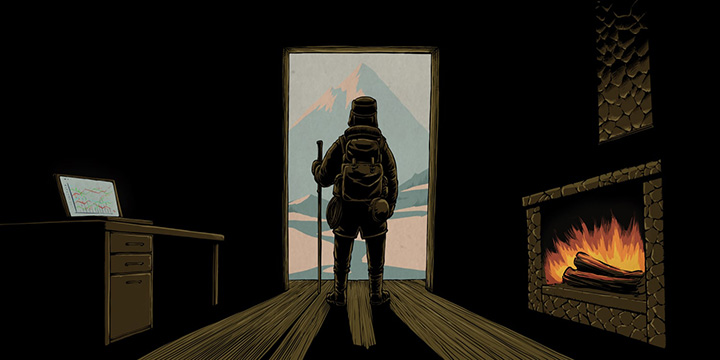Nietzsche said that he would not pay attention to any thought that had not arisen in the open air, in nature, involving all the muscles of his body. In keeping with this line of thinking, these ideas sprung up in the mountain in front of my house where I walk every morning.
We have intelligence, which reflects freely on reality. However we also have our minds, which is something else, that continuously identifies needs and dangers in order to anticipate them and protect our lives. With civilisation, after a lengthy process, we have drastically reduced the real dangers, but sadly the size and presence of our mind has not decreased accordingly. The opposite is the case. For that reason, although reality is now more peaceful and safer than ever, our mind relentlessly continues to manufacture fears – very few of which are real; the vast majority are abstract and unreal – in its eagerness to anticipate, turning us into hysterical and neurotic creatures.
Nietzsche also said that “the method, one must say it ten times, is what is essential, also what is most difficult”. It is the most difficult because it requires thought, which is not in abundance. And this is essential because when faced with uncertainty, the only certain answer is the method. In the face of the vaunted uncertainty that is, in the end, and fortunately, the essence of life, we have only one real answer, the subtle, secret certainty, which is our way, our particular way of doing things: the method.
In the case of Cobas AM, this method consists of not staying at home, safe from the cold and the elements, but going to the mountains every day and placing the body and thought in relation to reality; not staying at home, on the sea front, but going to find it, and navigating it – by sailing, as it fulfils the patient man -, accepting the uncertainty, the force of the wind and the sea, and all the dangers, trusting attention, patience and intelligence. In the case of Cobas AM, the method consists of not staying in the office making neurotic models and abstractions, but going to the companies to get to know the entrepreneur, to consider the processes live, to walk on the ground, to listen carefully, to trust everything in observation, in real attention, in dealing with others, in reflection and in patience.
A few days ago, Francisco García Paramés was asked in a newspaper, and he answered naturally: “I’m still doing the same old thing.” He was able to respond to Nietzsche’s quote: “the method, one must say it ten times…” Because, smiling and serene, the method that gave him amazing results for twenty-five years remains wedded to the man who, as the ancient peoples said – that nobody doubts – knows what is done.
Did you find this useful?
- |







